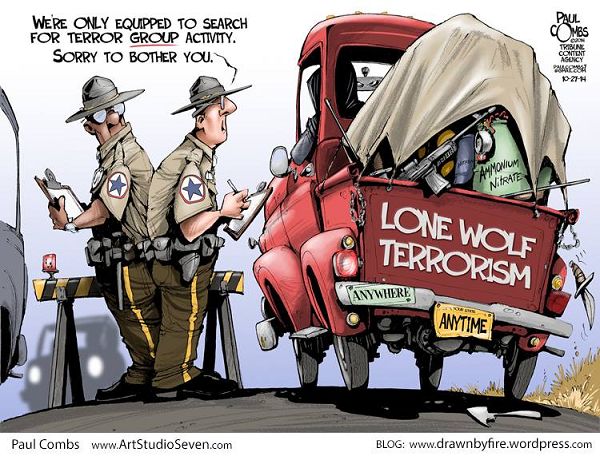From Insurgency to Caliphate: ISIS, Propaganda, and the Evolution of Terror
The rise of the Islamic State, also known as ISIS, ISIL, or Daesh, sent shockwaves through the world. Its brutal tactics, territorial ambitions, and sophisticated propaganda apparatus marked a disturbing evolution in modern terrorism. But to understand ISIS, we must delve into its origins, a story intertwined with the chaos of the Iraq War and the ambitions of a ruthless jihadist leader.
Roots in the Ashes of War
ISIS's origins trace back to the insurgency that erupted in Iraq following the 2003 U.S. invasion. Abu Musab al-Zarqawi, a Jordanian militant, established al-Qaeda in Iraq (AQI) – a local affiliate of the global terror network led by Osama bin Laden. AQI quickly gained notoriety for its brutal tactics, targeting both Iraqi civilians and coalition forces. While Zarqawi initially resisted pledging loyalty to bin Laden, they shared a common goal: attacking the West and establishing a radical Islamic state.
Abu Musab al-Zarqawi
Despite initial successes, AQI faced setbacks due to a surge in US troops and cooperation with Sunni Arab tribes. The group weakened, only to re-emerge under the leadership of Abu Bakr al-Baghdadi, a shadowy figure who capitalized on the growing instability in the region. The Syrian civil war, which began in 2011, provided fertile ground for ISIS. The group, now known as the Islamic State of Iraq and Syria (ISIS), exploited the power vacuum in Syria to establish strongholds and recruit disaffected Sunnis.
Abu Bakr al-Baghdadi
Propaganda as a Weapon: ISIS 2.0
What truly distinguished ISIS from its predecessors was its mastery of propaganda. Unlike previous jihadist groups, ISIS embraced the internet and social media, becoming the first true "digital terrorist organization." Its propaganda wing, the Al-Hayat Media Center, churned out slickly produced videos featuring high-definition visuals, gruesome violence, and apocalyptic rhetoric. These videos served multiple purposes:
- Recruitment: ISIS portrayed itself as a powerful, well-funded entity offering a sense of purpose and belonging to disaffected youth, particularly those isolated or marginalized.
- Intimidation: Brutal execution videos aimed to instill fear in enemies and inspire awe in potential recruits.
- Legitimization: ISIS carefully crafted a narrative portraying itself as a legitimate Islamic state, complete with social services and governance structures. This propaganda countered media portrayals of it as a mere terrorist group.
Beyond Brutal Imagery: A Nuanced Approach
While the violence in ISIS propaganda grabbed headlines, its effectiveness lay in its sophisticated messaging. ISIS tapped into grievances of Muslims worldwide, portraying itself as a defender against Western intervention and perceived injustices. The group skillfully exploited sectarian tensions in the region, framing the conflict as a war between Sunnis and Shias. This narrative resonated with some Sunni communities who felt marginalized by the US-backed Iraqi government. The ISIS Brand: A Global Threat
The ISIS Brand: A Global Threat
ISIS's propaganda transcended regional boundaries. Its media operation disseminated materials in multiple languages, targeting audiences far beyond the Middle East. The group actively encouraged "lone wolf" attacks by sympathizers abroad, providing instructions and inspiration through online channels. This tactic led to several horrific attacks in Europe and North America, highlighting the global reach of ISIS's message. Combating the Narrative: Countering Propaganda
Combating the Narrative: Countering Propaganda
Recognizing the power of ISIS propaganda, a crucial aspect of the fight against the group became countering its narrative. Governments and civil society organizations developed strategies to deconstruct the group's ideology, expose its brutality, and promote alternative narratives. This involved promoting media literacy, fostering interfaith dialogue, and addressing the root causes of radicalization.
The Fall of the Caliphate, But Not the Ideology
Military pressure and a coordinated international effort eventually led to the territorial defeat of ISIS in 2017. However, the group's ideology and online presence continue to pose a significant threat. ISIS maintains a sleeper cell network and utilizes encrypted communication channels to spread propaganda and inspire attacks. Countering this online radicalization remains a critical challenge.
Lessons Learned: The Evolving Threat
The rise and fall of ISIS offer valuable lessons for understanding and countering future terrorist threats. The group's mastery of propaganda demonstrates the power of online communication in radicalizing individuals and fostering global networks of violence. The fight against terrorism requires a multi-pronged approach, addressing not only the military aspects but also the underlying grievances and narratives that fuel extremism.
In conclusion, ISIS emerged from the ashes of war, leveraging propaganda to establish a global terrorist brand. While its territorial caliphate has crumbled, the group's ideology and online presence pose a continuing threat. Understanding ISIS's origins and propaganda tactics remains critical in our ongoing fight against extremism.






































![[LIVE] Engage2Earn: Save our PBS from Trump](https://cdn.bulbapp.io/frontend/images/c23a1a05-c831-4c66-a1d1-96b700ef0450/1)







![[ℕ𝕖𝕧𝕖𝕣] 𝕊𝕖𝕝𝕝 𝕐𝕠𝕦𝕣 𝔹𝕚𝕥𝕔𝕠𝕚𝕟 - And Now What.... Pray To The God Of Hopium?](https://cdn.bulbapp.io/frontend/images/79e7827b-c644-4853-b048-a9601a8a8da7/1)
